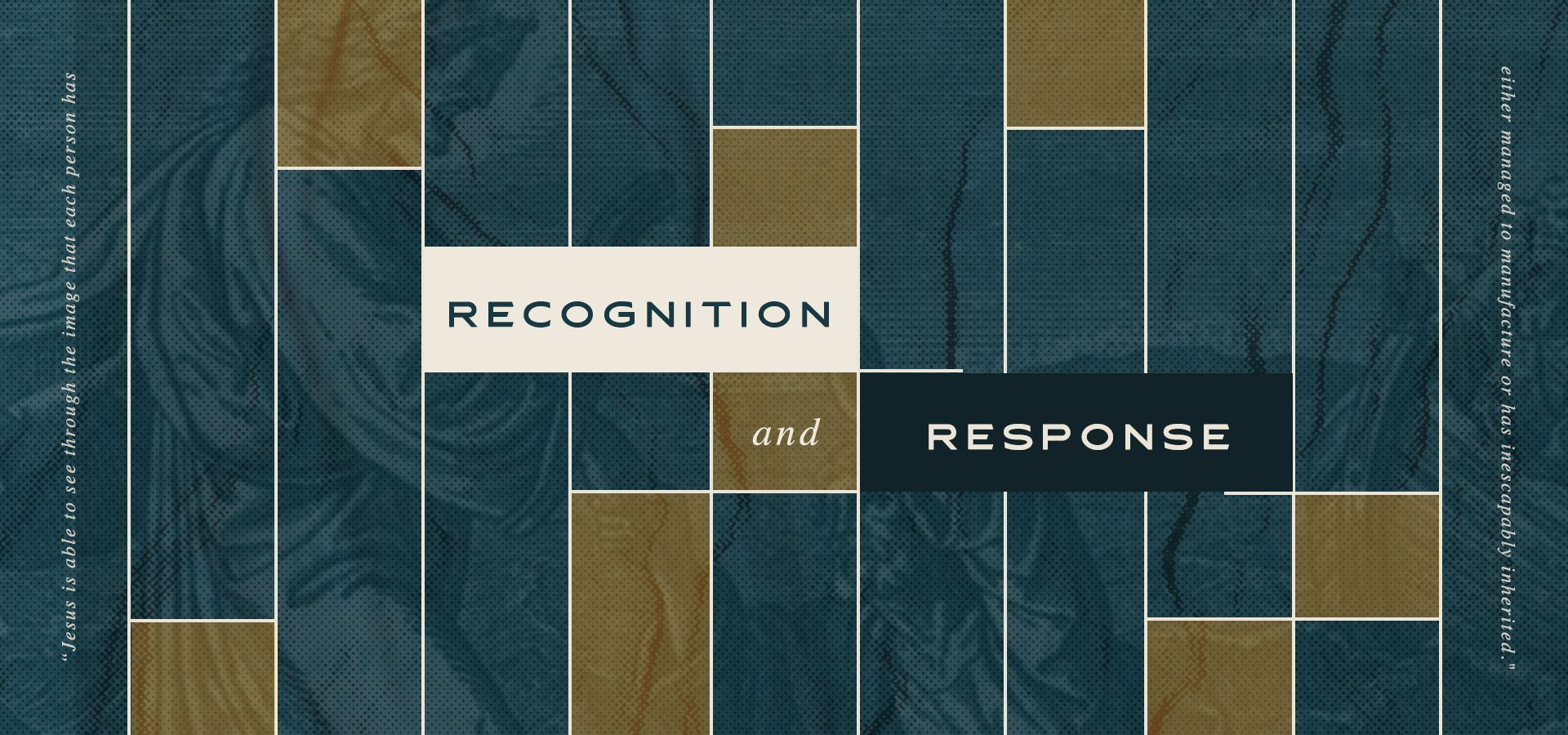Recognition and Response

As we read the stories of Jesus, we soon marvel at the array of characters, personalities and backgrounds that He chooses to engage. We read of kings and commoners, priests and paupers, rulers and wrongdoers. We know of farmers and felons, schemers and scorners, masters and manipulators. Truly, “there is no favoritism with God” (Romans 2:11). And a continuing theme throughout the constant stream of interactions is that of recognition — a two-way recognition.
One direction of this recognition is that Jesus is able to see through the image that each person has either managed to manufacture or has inescapably inherited. He cuts through the screens and sees where their projection is sourced. He sees them for who they truly are. And this light, His light, is met with differing reactions. Some squint and squirm while others repent and find rest.
The second direction of the two-way recognition is related and often comes on the heels of the first. We see it when differing individuals recognize who Jesus is. Some of the more memorable reactions mark world-changing conversions. Peter exclaims, for example, “You are the Messiah, the Son of the living God!” (Matthew 16:16). The Samaritan woman at the well testified, “Come, see a man who told me everything I ever did! Could this be the Messiah?” (John 4:29). And after fearing for their lives within a storm-tossed ship, his disciples marveled, “Who then is this? Even the wind and the sea obey Him!” (Mark 4:41). But again, this recognition isn’t shared only by those who repent and find rest.
We see some who squirm and squint at their recognition of who Jesus is. We find Pilate’s playful suspicion when asking the Jews, “What should I do then with Jesus, who is called Messiah?” (Matthew 27:22). We also hear the shrieks of demons who shout, “What do You have to do with us, Son of God? Have You come here to torment us before the time?” (Matthew 8:29).
So then, what are we to do with this two-way recognition? We are to rightly recognize Christ for who He is — the Son of God incarnate. But we’re not to stop there, for even the demons can rightly recognize Him in this regard. In light of this truth, we’re invited to be truly known and truly loved — to repent of our sin and rest in Christ’s finished work. We are to submit to His Lordship.
A final implication is to clearly present Christ to others. Their reaction, as we’ve seen, is beyond our control, but we are to faithfully usher them to a recognition of who He is. A continued effort toward clarity through Scripture and the enlightenment of the Spirit is our only hope for a right response to this two-way recognition. Our pursuit and prayer is a response much like those who observed and listened to the Samaritan woman at the well. “We no longer believe because of what you said, for we have heard for ourselves and know that this really is the Savior of the world.” (John 4:42).
Here are a couple questions I’ve considered in response to this two-way recognition:
- Who have I recently overlooked or thought beyond the reach of the gospel?
- What uncomfortable area might God be calling me to step into in order to clearly present Jesus as Messiah?
